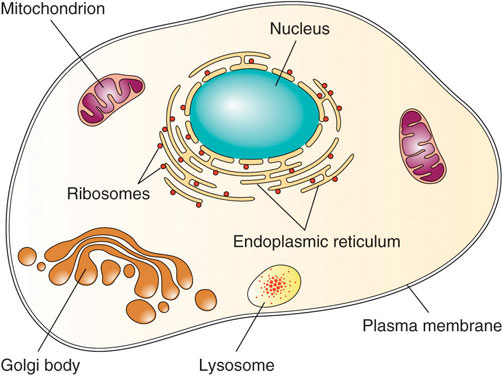Micro-organisms – friend or foe?
We can’t see them. We can’t hear them or feel them, but they are with us. There are 10 trillion (10 x 1,000,000,000,000 or a million million) cells in the average body. For every cell, we have 10 times as many micro-organisms – that’s 100 trillion micro-organisms on and in our bodies! We are a walking, talking ecosystem.
But don’t worry – without micro-organisms, we wouldn't survive.
Micro-organisms are small
A micro-organism is a living organism that is so tiny it can only be seen with the aid of a microscope.
Consider that the largest human cells are about the diameter of a human hair. Bacteria cells are one-hundredth the size of a human cell and viruses are much, much smaller again. If you imagine that a single virus was the size of an adult human, a bacterium (single cell) would be over 10 storeys high by comparison. A bacterium next to a human cell is like a tiny boat next to a big ship. Hundreds of thousands of bacteria could fit onto a pinhead.
Friend and foe
The main micro-organisms in and on our bodies are protozoa, algae, fungi, bacteria and viruses. Most micro-organisms are beneficial, for example, there are micro-organisms in our large intestine that synthesise vitamins and allow them to be absorbed into the bloodstream. However, a tiny minority are pathogens (disease-causing agents). These pathogens, often called germs or bugs, are a threat to all life forms.
Let’s take a closer look at bacteria, viruses and parasites.
Bacteria
You cannot escape bacteria. They are everywhere! The good thing is that they are mostly harmless, but the pathogenic bacteria can make you sick. They thrive in unhygienic conditions and can grow very quickly by dividing in half and then the two halves grow and then divide again and so on.
A bacterium is a very simple form of life – just a single cell. They have different shapes – some look like balls, rods or spirals. They have a tough cell wall that protects them. They are like all living organisms and need to ‘eat’ (ingest) for energy and growth. They ingest starches and sugars that are found on all organic matter.
Viruses
Viruses are micro-organisms that are so basic (and tiny) that they are not even cells and are not classified as living. Viruses are just genetic material (DNA or RNA) wrapped up inside a strong ‘coat’ made of protein. They cannot survive by themselves, so they need a host that will enable them to multiply. A virus will hijack a cell in your body and change the instructions of the cell so that, instead of doing what it was designed to do, the cell begins to produce copies of the virus.
Eventually, it makes so many that the cell bursts open and releases all the viruses, which then hijack many, many more cells. Some viruses hibernate (become dormant) while they wait for the right conditions to come along.
Viruses have different shapes – rods, spheres or many-sided spheres. Some are even shaped like a spaceship! Pathogenic viruses can be very dangerous, but there are a few good viruses that are not harmful. Researchers and scientists are trying to find ways of using these viruses to fight bacterial infections.
Parasites
A parasite lives on or inside its host organism in a very unequal relationship – it takes all its food from its host and doesn't give anything back. Parasites can live on our bodies (like lice) or in our bodies and cause lots of different diseases. Parasitic worms (including hookworms – see Professor Le Gros’s research) can live in our bodies and make us sick. Some parasites are micro-organisms like protozoa – a single-celled parasite. Diseases like malaria and Guardia are protozoa.




